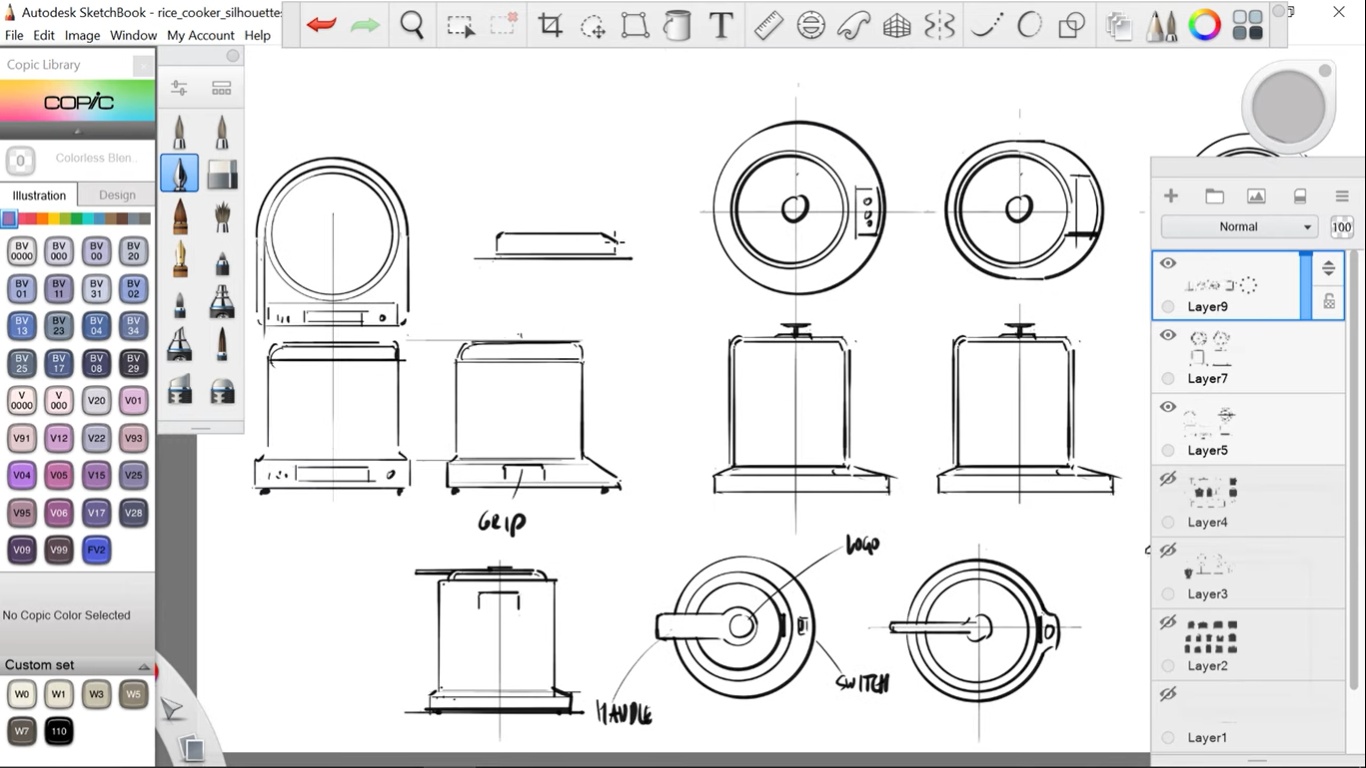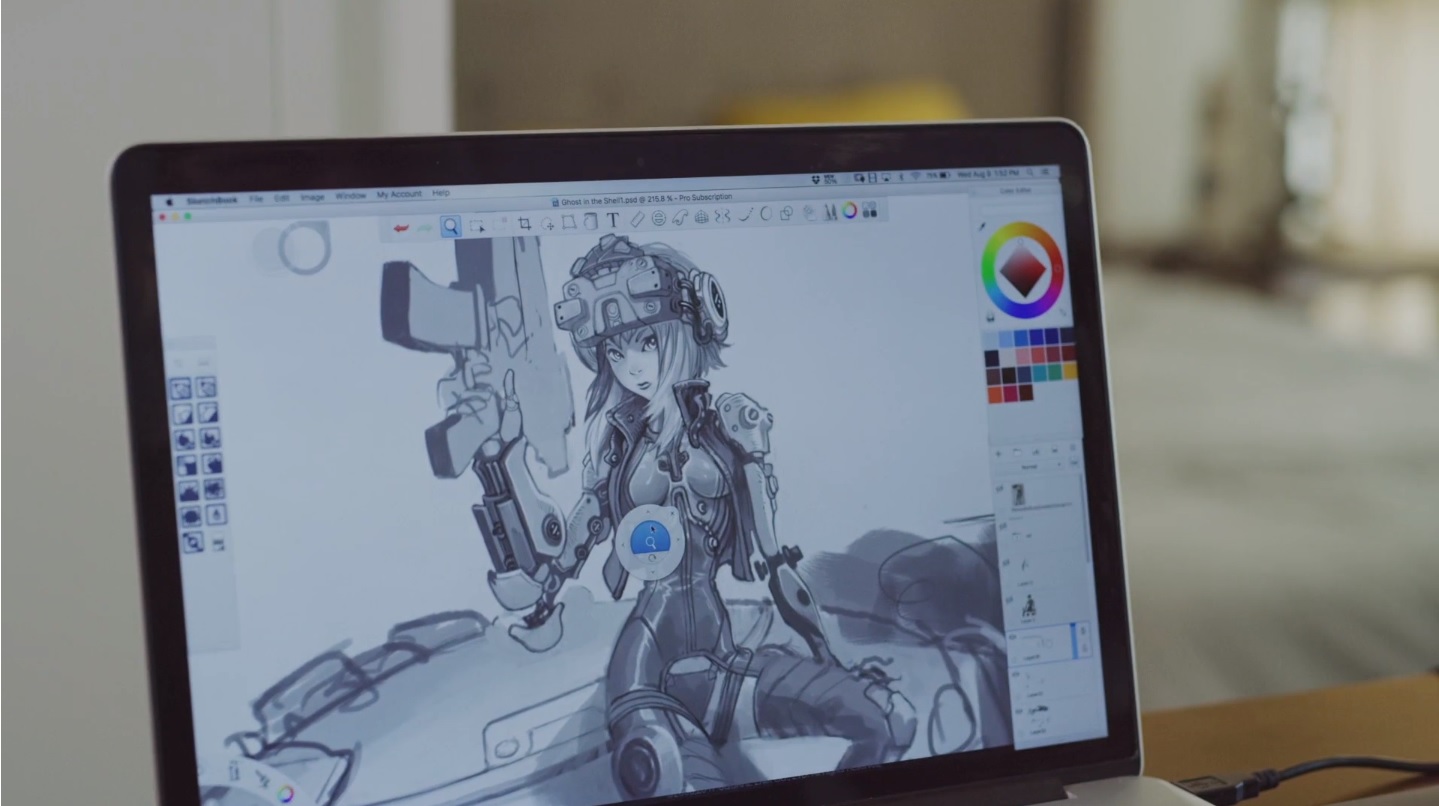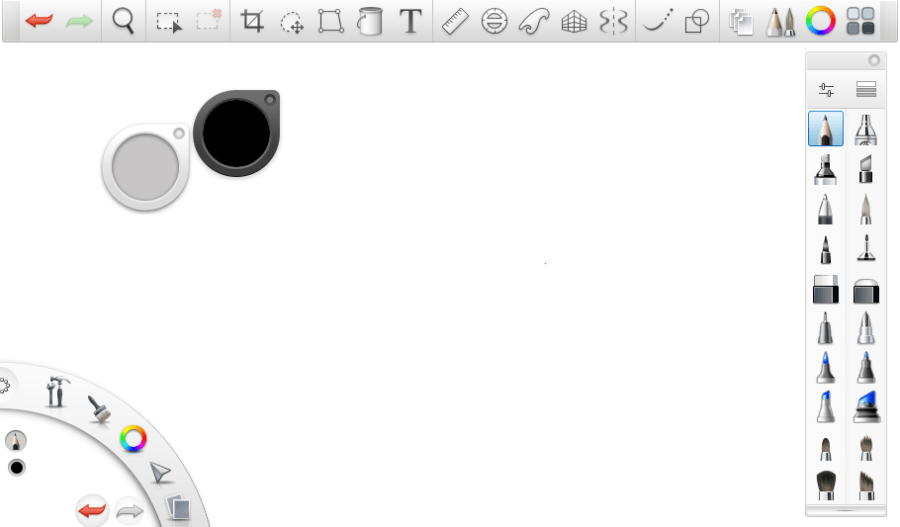

To change the brush edges, in the Edge section, adjust the hardness. To randomize the stamp, in the Randomize section, adjust size, flow, rotation, and spacing randomize.

To adjust the brush stamp, in the Stamp section, adjust the roundness, rotation, and spacing. To capture the shape and color of the stamp, in the Texture section, tap the arrow next to Off and select Shape + Colors. Rotate to Stroke dynamically rotates the texture in the direction of the stroke. To rotate the stamp, in the Stamp section, under Rotation Dynamics, tap the arrow to select either Rotate to Stroke or Controlled by stylus tilt. For an elliptical stamp, set Roundness to a low value. To change the shape of the stamp, use Roundness. Before capturing a texture stamp, here are couple additional useful tip: You can set the shape and/or color and make a texture from a rotated stroke or capture something on your canvas to use as a texture. Once you’ve captured the stamp, you can throw away that layer.)

(If you don’t want to merge all layers, just for the sake of creating a brush, try duplicating of all layers and merge the duplicates. When capturing a stamp texture, ensure all the strokes/paint you want included in your brush stamp are on the active layer. The device you are using, as well as the version of SketchBook Pro you are running, will determine the options available.ĭo you want to create a texture brush that doesn't use a texture for the default library? If so, why not capture a texture? You can even capture a shape, once you’ve created a DIY brush (see Brush properties and Custom brushes, use Capture to add a texture and or shape.


 0 kommentar(er)
0 kommentar(er)
